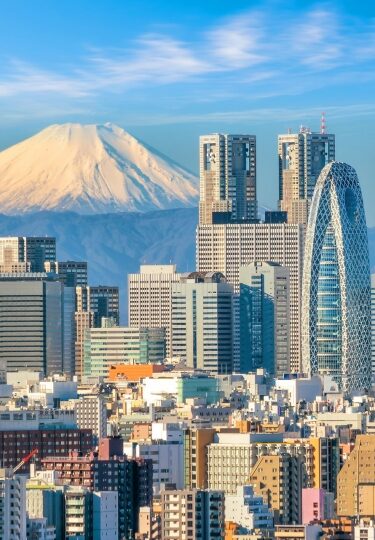Dreaming of a destination that’s exotic and colorful, filled with centuries of history and new experiences around every turn?
Three days in Tokyo isn’t anywhere near enough time to explore the whole city, but it’s plenty of time to scratch the surface and get a taste of Tokyo’s unique blend of traditional and modern cultures.
Tokyo is easy to navigate, safe, and bursting with culture and vibrancy. It’s a great first city to visit if you’ve never been to Asia, but even if you’ve traveled the world, you’ll still find plenty to explore with three days in Tokyo.
Here’s a guide to serve as your Tokyo three-day itinerary, but feel free to swap activities in and out if you find yourself more drawn to a live-action robot dinner theater (yes, it’s a thing) than to ancient temples.
Day 1
9 a.m.: Visit Meiji Shrine in Yoyogi Park
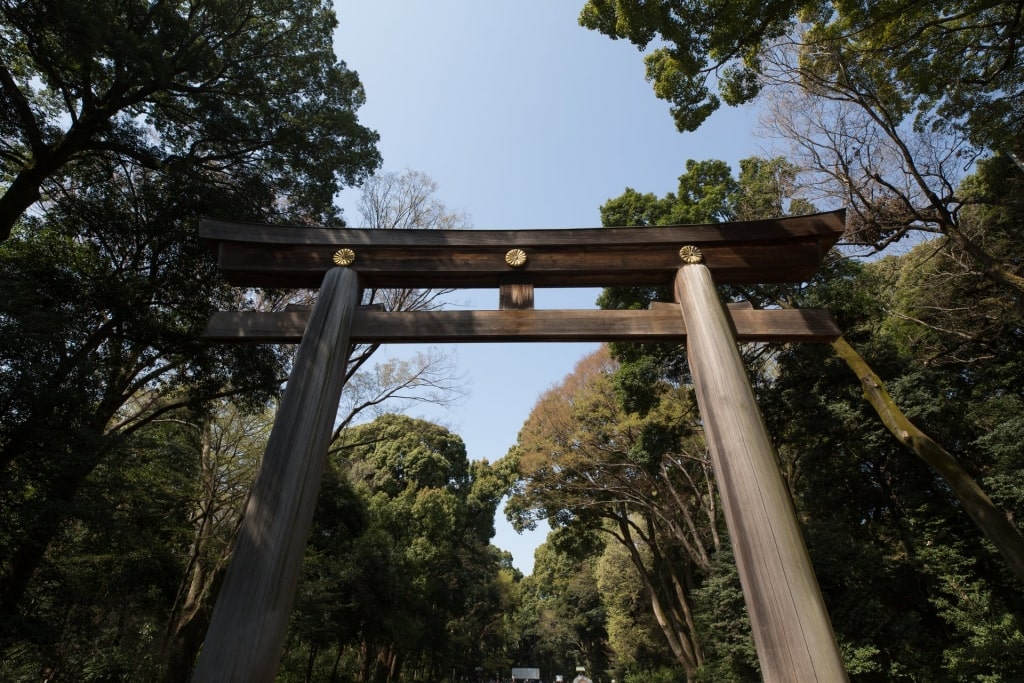
Meiji Shrine
Start your Tokyo three-day itinerary by getting a feel for the city’s rich history. Head straight to the Meiji Shrine, housed in the center of Yoyogi Park. It’s one of the city’s largest parks and served as the site of the Olympic Village for the 1964 summer games.
One of the most beautiful places in Japan, the sprawling grounds are quite relaxing and make an excellent first stop if you’ve been traveling and need to stretch your legs or have a low-key morning. The cherry blossoms here are simply beautiful in the spring.
When you reach the torii gate, called Meiji-Jingu, there’s plenty to see between gardens and multiple buildings. Signage is available in English, so it’s easy to learn about the site’s history as a structure in honor of Emperor Meiji, who died in 1912.
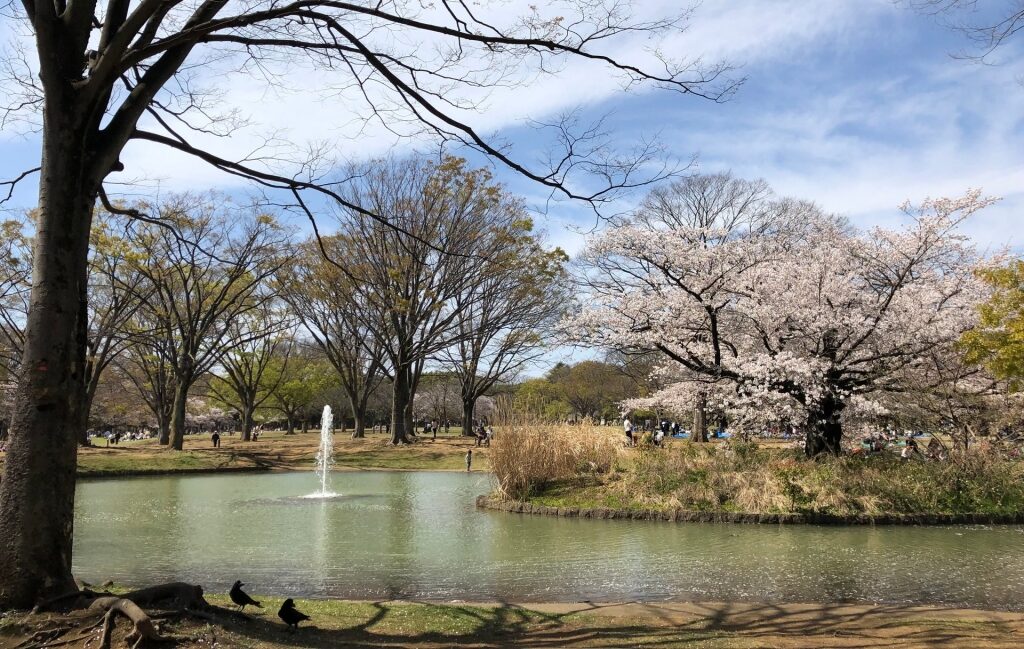
Yoyogi Park
When you’re done exploring the temple, take some time to continue walking around the park and make a wish on one of the park’s many “wishing trees”—they’re easy to spot. Throughout the park, you’ll find food and drink vendors, plus various gardens and teahouses.
1 p.m.: Stroll through Omotesando and Harajuku
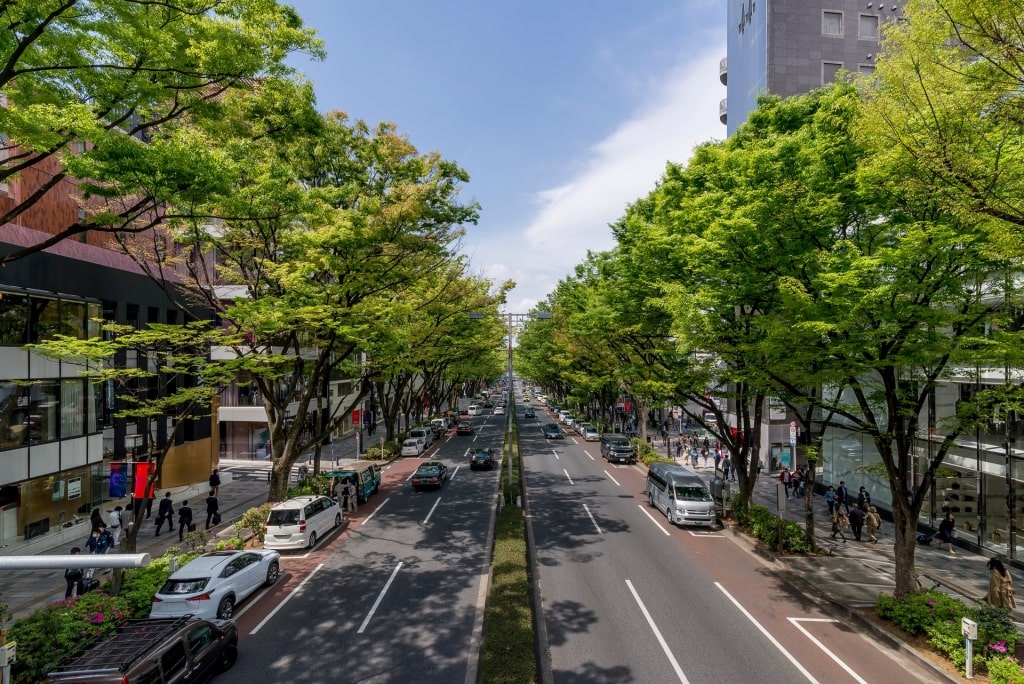
Omotesando
This afternoon, make your way to Omotesando, one of the city’s prettiest and most walkable streets. This is Tokyo’s high-end fashion district, but you don’t have to be an avid shopper to enjoy your time here—it’s worth a visit for the street’s fantastic architecture. Some of the world’s most famous architects have designed buildings in this exclusive neighborhood in Tokyo.
Near the northern end of Omotesando is the Harajuku District, which exemplifies the culture Westerners perhaps most often associate with modern-day Japan. This little stretch of road is filled with quintessentially Japanese items, from small green tea stands to cartoon cat stores to eyebrow-raising street fashion.
Depending on your mood, you could swap this afternoon with tomorrow’s afternoon. As long as you see it all, it doesn’t matter when in your Tokyo three-day itinerary you visit each destination.
6 p.m.: Have a Traditional Kaiseki Meal at a Geisha Show
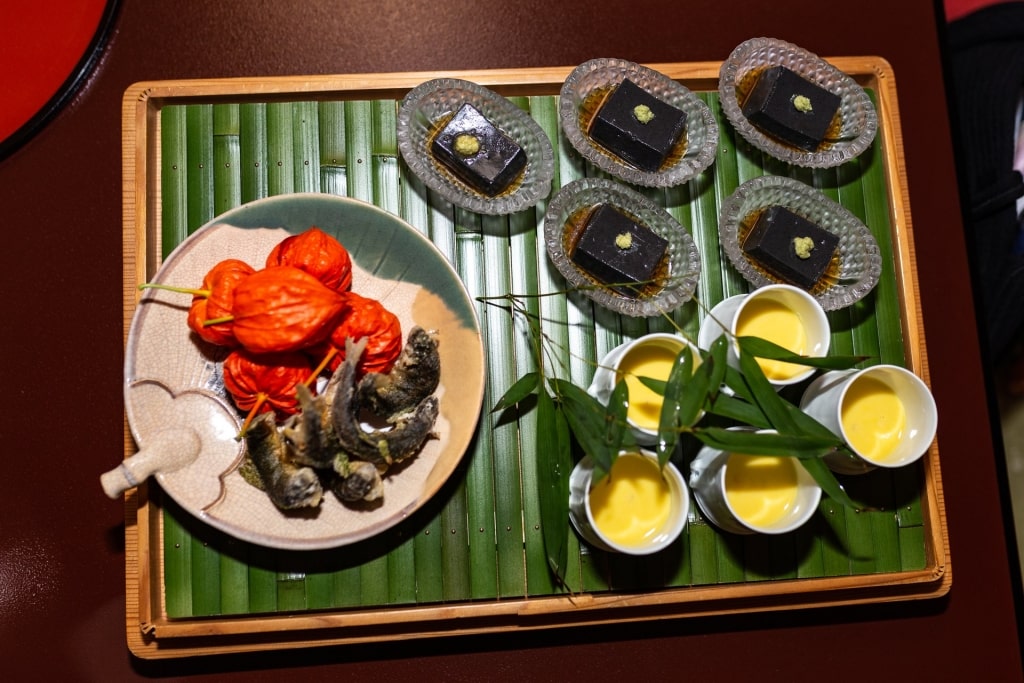
Kaiseki
Food is one of the most essential parts of any culture, and what better way to get to know Tokyo than to try a traditional Japanese meal? Though Kaiseki—a multi-course meal with a focus on artful presentation—is beyond tasty, it’s also beyond beautiful, as it was traditionally reserved for nobles of Japanese society. Today, enjoying authentic kaiseki is an experience you won’t find anywhere else in the world.
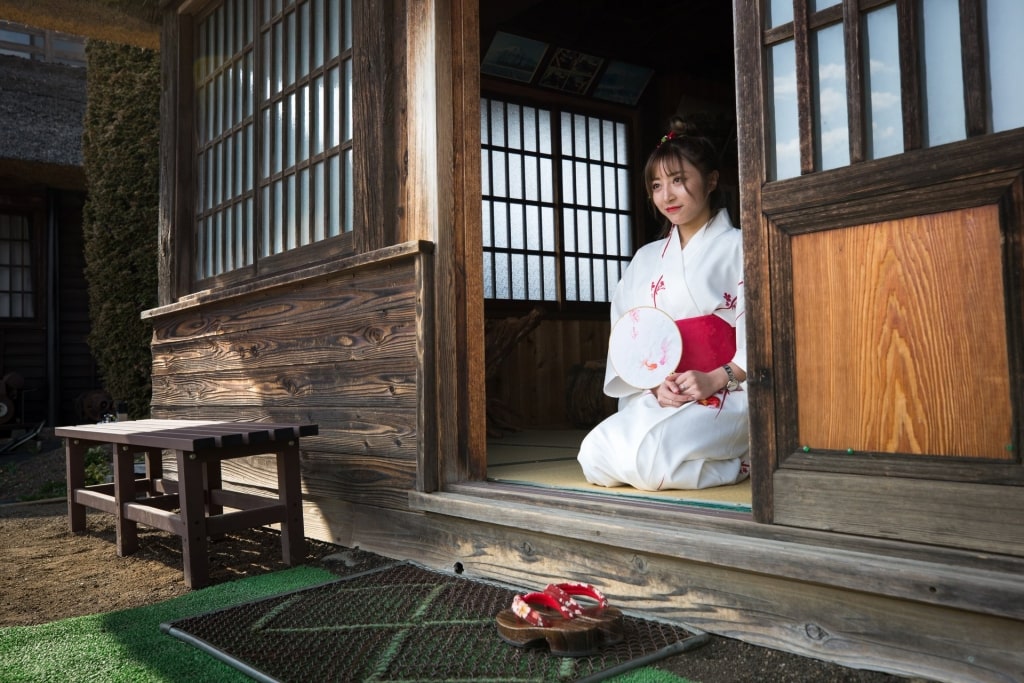
Geisha show
Of course, nothing pairs better with a traditional and elegant meal than traditional and elegant entertainment, which is why geisha shows and kaiseki are often paired together (as they have been for centuries). So on your first evening in Tokyo, try to experience both.
At most kaiseki geisha shows, traditional Japanese storytellers, musicians, and dancers will perform as you enjoy the creative and mouth-watering cuisine. Most shows usually offer time afterward to chat with the performers and learn more about the traditions.
Day 2
9 a.m.: Get a Bird’s-Eye View of Japan

Mount Komagatake
Start the second of your three days in Tokyo by heading just outside the city to the ropeway on Mount Komagatake. The ride to the top is around seven minutes long and, provided it’s a clear day, you’ll have fabulous views of Japan’s most famous sites, including Tokyo, the geothermically active Owakudani Valley, and Mt. Fuji—the everlasting symbol of Japan for centuries and one of the best places to see in the world.
Japan is known for its beautiful landscapes, and the railway is a fantastic way to see picturesque views without spending a whole day hiking or traveling for hours. Since the town of Hakone is a bit outside of Tokyo’s city limits, you may want to consider traveling with a tour operator who can also arrange transportation and lunch at a locally owned restaurant. Some tours also include a boat ride on Ashino-ko Lake (also called Lake Ashi or sometimes Hakone Lake.)
With towering mountains in the background and clear water, the lake is stunning any time of year, but it’s especially beautiful in Autumn against the backdrop of orange, red, and yellow leaves. The lake is also impressive due to its proximity to snow-covered Mt. Fuji—in fact, you’ll often find it depicted near the mountain in historical art and drawings.
Read: Why Visit Japan in the Fall
2 p.m.: Tailor Your Visit: Ancient or Modern Wonders
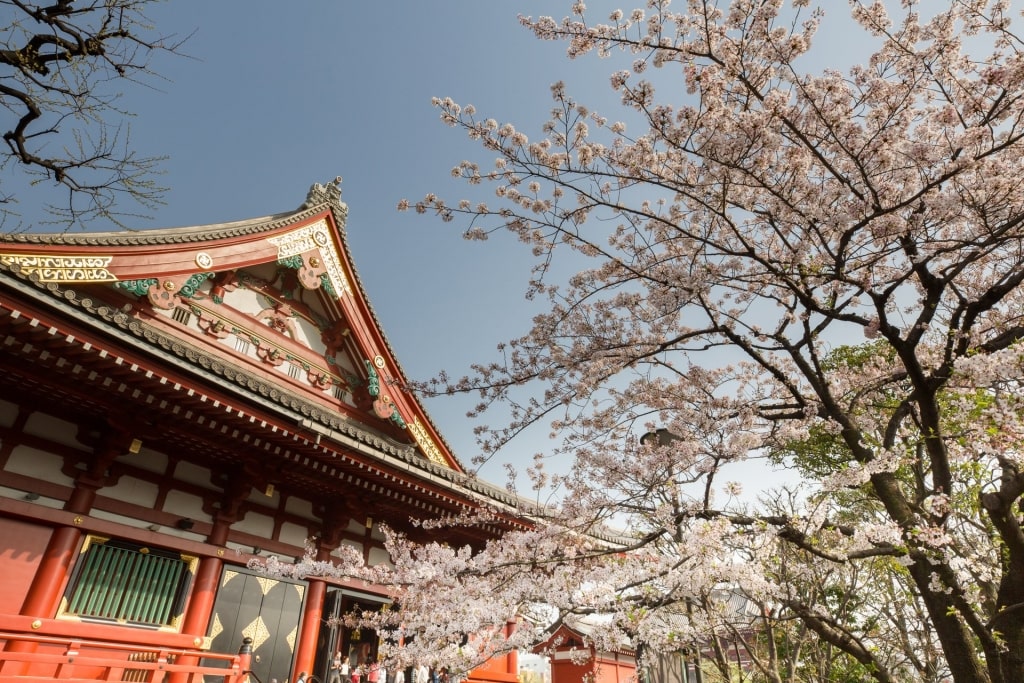
Sensoji Temple
When you’re back in the city, plan to visit one of the many fantastic historical sites. There are plenty of choices, so don’t feel like there’s one site you simply can’t miss— they’re all beautiful in their own way.
One of Tokyo’s most famous temples is Sensoji (also spelled Sensō-ji) Temple, the oldest in Japan. It gets crowded, but it’s well worth the experience. The grounds consist of the actual temple, a beautiful five-story pagoda, several gates and shrines, and a well-manicured garden open to guests in the spring. The temple was built in 645 and rebuilt after it was almost entirely destroyed in World War II.
You’ll know you’re nearing the temple when you start to see people buying souvenirs in stalls selling all manner of traditional wears. While on the temple grounds, look for the small hexagonal building set behind a small fence, called Senso-ji Rokkakudo. Built in the 17th century, it’s the oldest still-standing wooden structure in the city.
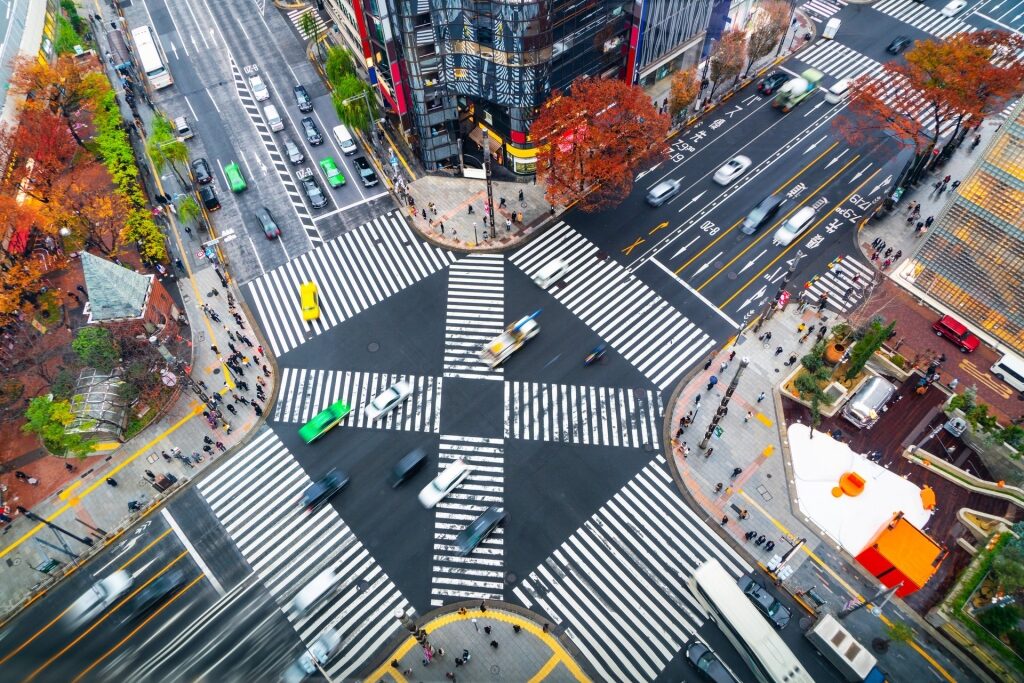
Ginza District
If you’ve had your fill of ancient history by this point during your three days in Tokyo, you may instead want to spend the afternoon in the Ginza District, one of Tokyo’s most modern and urban areas. Here, you can try your luck at the colorful, fun, and sometimes downright confusing Japanese arcades, which are fun to walk around for their magnitude alone. You could also browse the elegant stores in the area. For a truly unique experience, head into the basement of one of the huge department stores in the neighborhood.
Unlike department stores in the U.S., the first floor of most of the major stores here aren’t devoted to shoes or purses: they’re all about food. The bottom floor of stores like Mitsukoshi Ginza and Matsuya are filled with amazing culinary delights, from booths selling made-to-order sushi, sprawling confectionery and sweets stores, to bento boxes just begging to be photographed. These food courts, called depachika in Japan, are a huge part of Japanese food culture and surprisingly tasty. This is not your standard American mall food court.
7 p.m.: See Tokyo Tower at Night
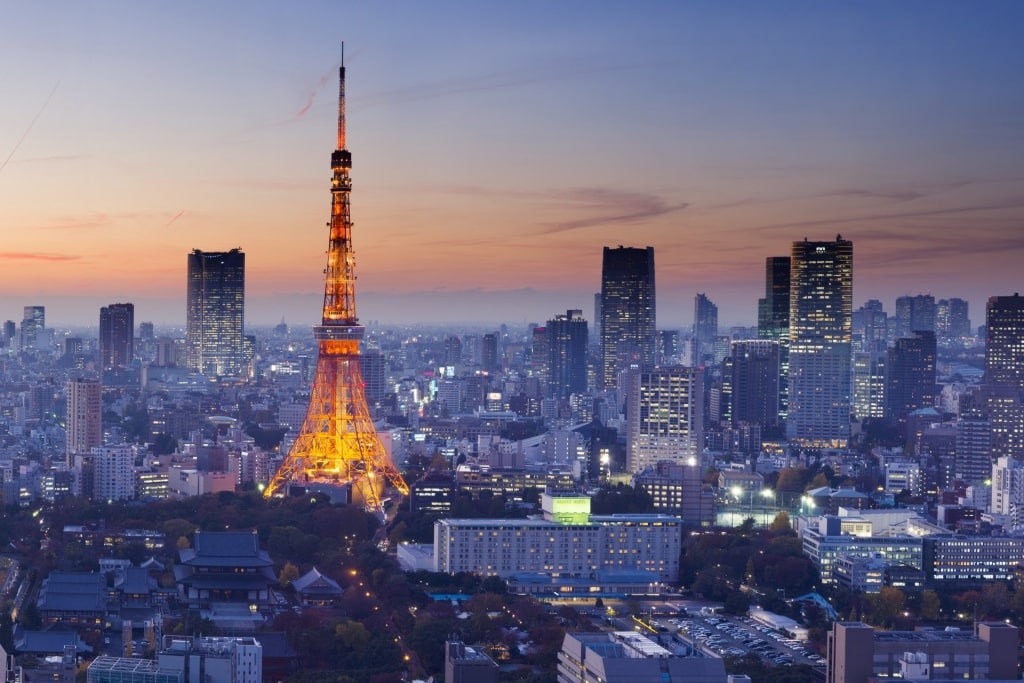
Tokyo Tower
If you’re following this three-day Tokyo itinerary, you’ll have spent the morning of your second day at the top of Mt. Komagatake. So why not spend the evening of your second day in a similar position: from high above the landscape?
This evening, head to one of the Tokyo skyline’s most defining elements: Tokyo Tower. From the modern, reflective top deck, you’ll get a scenic view of one of the best skylines in the world from more than 800 feet above it. The futuristic deck has audio commentary in English to help you identify the landmarks you’ll see from your amazing vantage point.
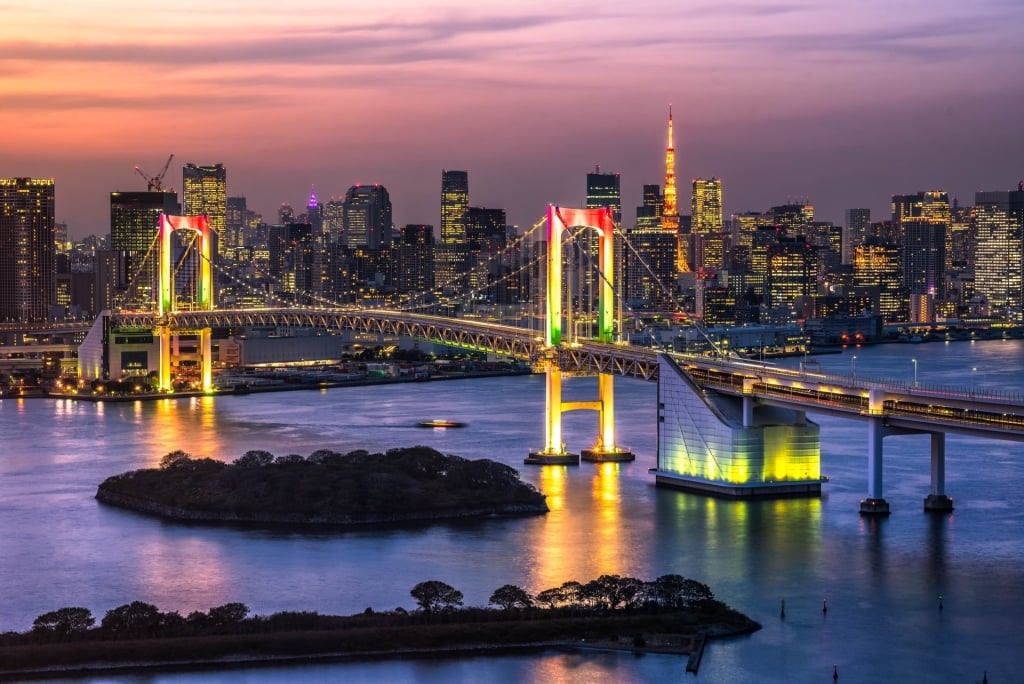
Tokyo Rainbow Bridge
If you’re fine with having a late dinner, head to the Tokyo Rainbow Bridge after Tokyo Tower. The suspension bridge lights up in a rainbow of colors at night (hence the name), powered by sunlight collected during the day. It’s a sight to see any time of day, but definitely best experienced at night.
8:30 p.m.: Have a Late Shabu-Shabu Dinner
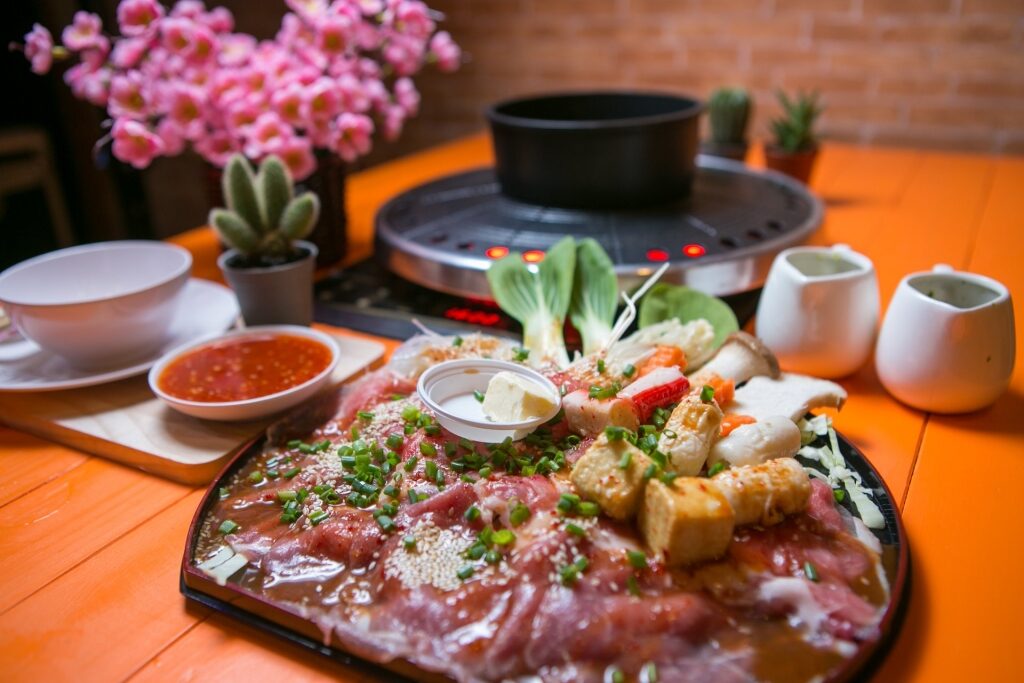
Shabu-shabu
If you’ve never tried shabu-shabu, you’re in for a treat. Head to Onder in Yokohama for an interactive dining experience. Similar to hot pot restaurants, shabu-shabu restaurants serve a pot of flavorful broth to your table. You’ll receive separate plates with the ingredients for your shabu-shabu, including thinly sliced meats, fish, mushrooms, carrots, noodles, or tofu. The experience is fun and casual and pairs well with good sake and great friends.
Day 3
9 a.m.: Unwind in a Japanese Garden or Wander Through Kamakura
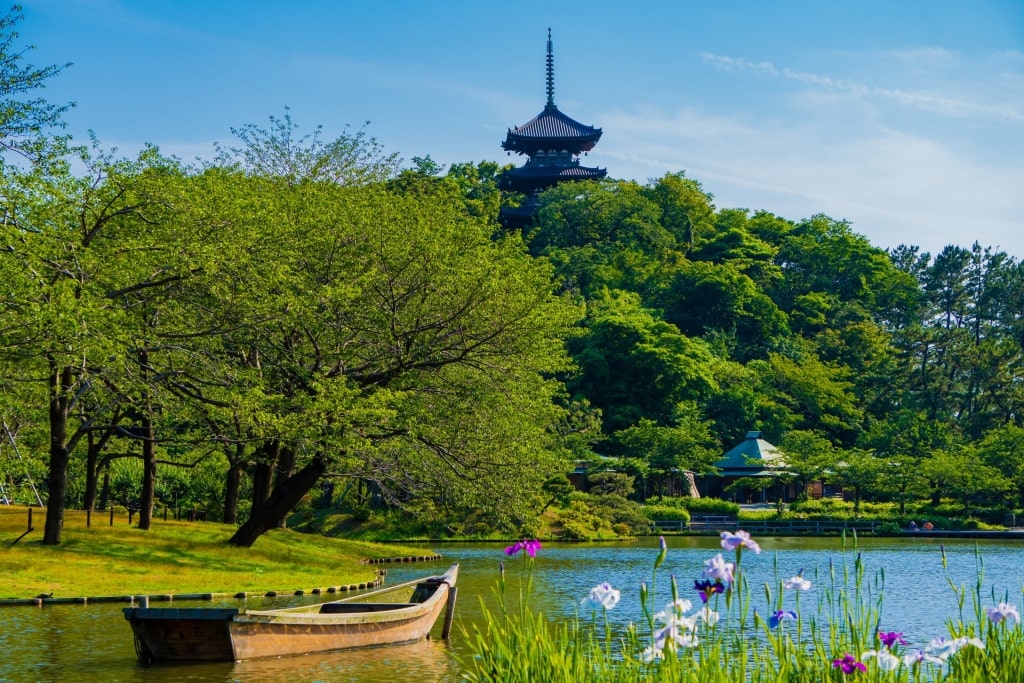
Sankeien Gardens
After a busy three days in Tokyo, spend the morning of the third day relaxing and finding a little moment of zen. If you love Japan’s meticulous gardens, head to the Sankeien Gardens. The sprawling gardens may remind you more of Kyoto than Tokyo, as they’re dotted with traditional buildings, tea houses, ponds, and pagodas.
The gardens used to be the private home of a wealthy businessman, but they’re now open to the public. As you might expect, the cherry blossoms here are simply stunning in the spring. While you’re taking in the sights, consider trying a flavored bubble (boba) tea from the garden cafe—they’re one of Japan’s most popular drinks.
Read: Two Days in Kyoto
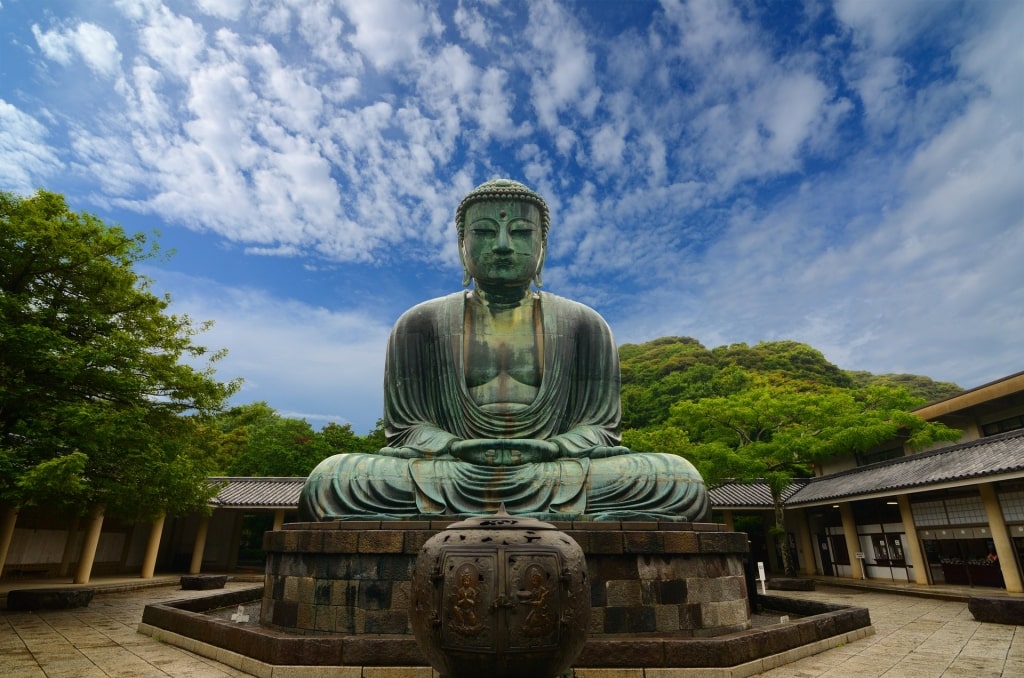
Kotokuin Temple
If you’re more interested in history, spend the morning in Kamakura, home of Japan’s first Shogun (a military and political commander). Though Kyoto became the country’s seat of power after just a century or so of rule in Kamakura, it remained a popular town—and it still is today.
Be sure to visit Kotokuin Temple in Kamakura, one of the most famous temples in Japan and home of a 30-foot-tall Buddha statue dating back to the 13th century. As old as it is, however, it’s not the oldest structure in Kamakura: that honor belongs to the Tsurugaoka Hachimangu shrine, which dates back to the mid-1000s. If you’re familiar with Japanese history, you won’t be surprised to learn this massive shrine is dedicated to the patron saint of samurais—this was the Shogun’s home, after all.
If you have extra time, there are a few charming streets around Kamakura that still retain a historical feeling. If you’re looking for some of the best things to buy in Japan, Komachi Street is a great choice. You’ll find both affordable souvenir shops and high-end antique and art stores, perfect for finding gifts for friends and family back home.
12:30 p.m.: Have a Traditional Low-Key Lunch
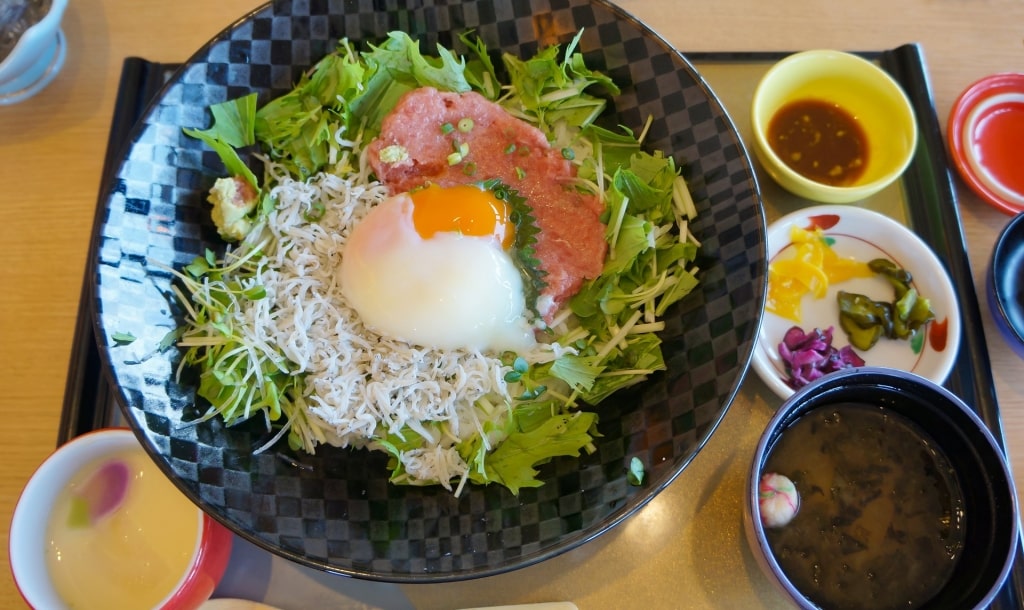
Shirasu bowl
Alongside many of Kamakura’s charming shops are casual but extremely tasty restaurants. There are dozens to choose from, but try the lunch set at Sushidokoro Kimi or Udon Miyoshi, an extremely highly rated Udon restaurant with plenty of vegetarian and seafood options.
3 p.m.: Explore Kokyo Gaien National Garden and Edo Castle
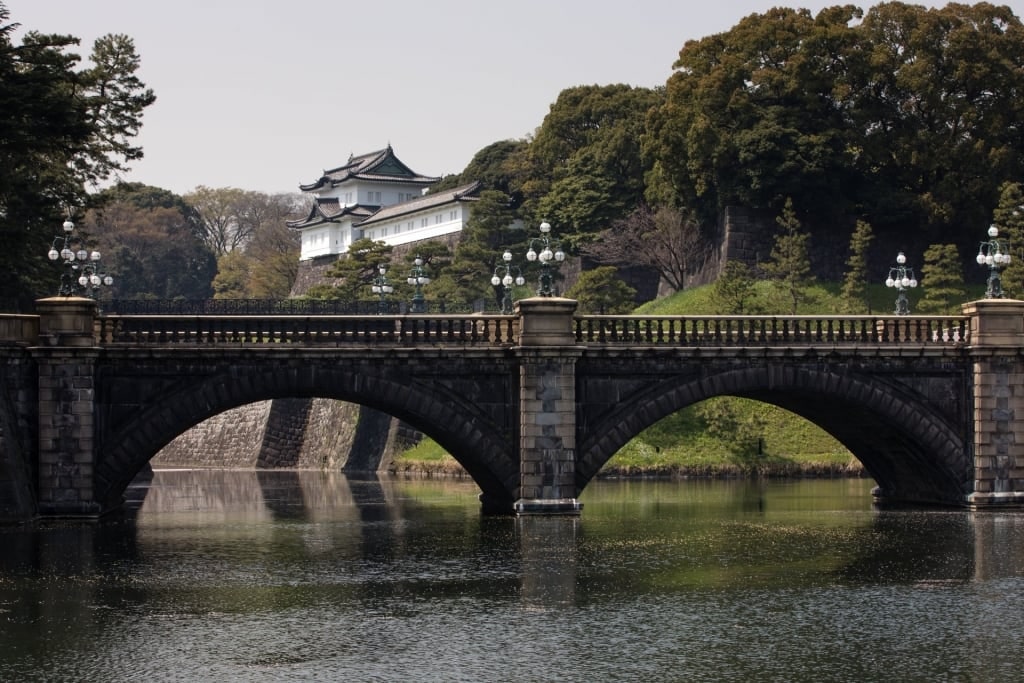
Kokyo Gaien National Garden
Spend your final afternoon and evening exploring one of Tokyo’s most historically significant sites: Edo Castle (or, more accurately, the remains of Edo Castle). Housed in what is today the Kokyo Gaien National Garden, Edo Castle was built in the 15th century but was greatly damaged in WWII. Fortunately, you can still see where the sprawling castle once was, as the country protects the remaining walls and gates for their historical value.
Within Kokyo Gaien National Garden are several other smaller Tokyo gardens, as well as famous sites like Nijubashi Bridge, one of the most beautiful backdrops in Japan for photos. In the gardens, you can also visit the only part of the Imperial Palace open to guests. You can even rent a small paddle boat on the gardens’ Chidori-ga-fuchi Moat. It’s the perfect romantic activity for two, especially during a spring sunset.
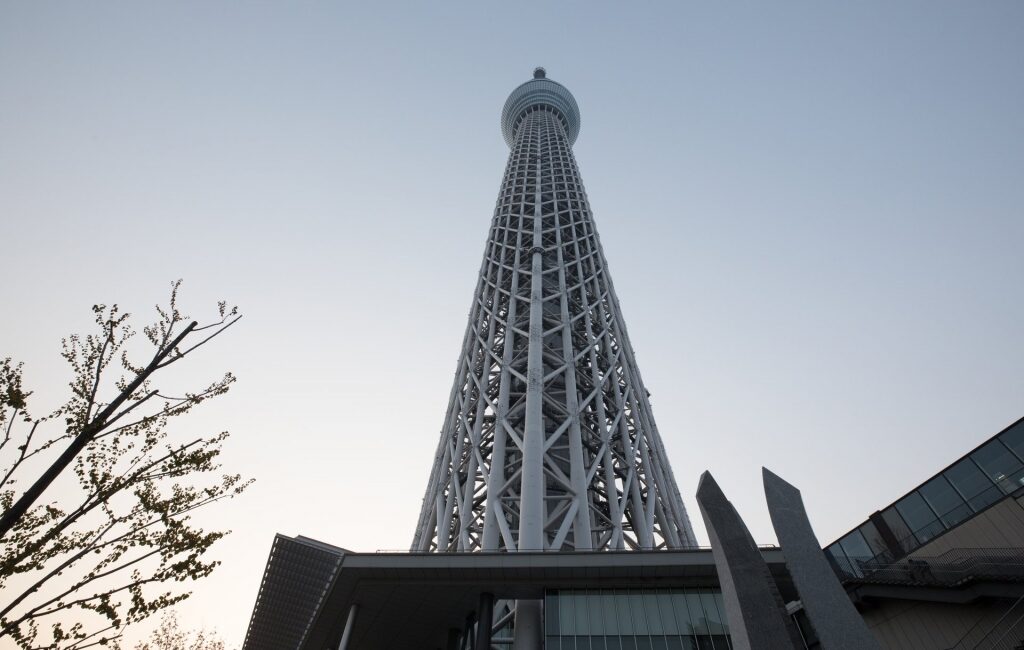
Tokyo Skytree
Tokyo is the perfect jumping-off point for a cruise around Asia. Discover some of the region’s most incredible destinations with Celebrity Cruises.
Browse cruises to Japan on our website. You’re certain to fall in love with the Land of the Rising Sun.
